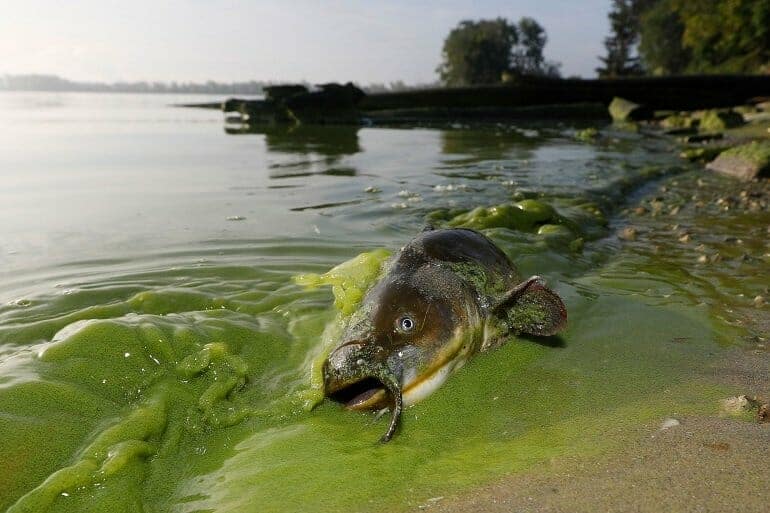

Photo: Algae blooms are a frequent problem in Lake Erie. (AP)
The greatest lubricant for intergovernmental harmony may well be water. I know that sounds odd, but the nation’s largest bays and lakes offer compelling examples of how multiple states can work with each other — and also with towns and cities, federal agencies, universities, nonprofits, and foreign governments — to combat water pollution.
There is a lot of work to do. Ambitious surveys of more than 2,000 locations carried out in five-year cycles by the states and the Environmental Protection Agency show that a little more than half of the nation’s rivers and streams are significantly polluted. That dirty water, in turn, flows downstream into the nation’s bays, lakes and coastal areas.
The chief contaminants are nitrogen and phosphorus, which contribute to the formation of algae blooms that lower oxygen levels needed to support aquatic life. A lot of the phosphorus comes from fertilizer, so the problem is particularly acute near farmland, though urban areas contribute as well. Once the chemical is introduced, it poses a permanent problem for the water, much like the carbon dioxide […]
Full article: On Water Problems, Governments Actually Work Together
Clean water is essential for life, yet millions of Americans unknowingly consume contaminants through their…
Human brains contain higher concentrations of microplastics than other organs, according to a new study, and the…
From the Office of the Governor: In anticipation of a multi-day, significant atmospheric river in Northern California,…
From Governor Newsom: Scientists, water managers, state leaders, and experts throughout the state are calling…
Photo: A harmful algal bloom in Milford Lake, Kansas, made the water appear bright green.…
An expanded plastic foam coffee cup is at a donut shop in Monterey Park, California.…